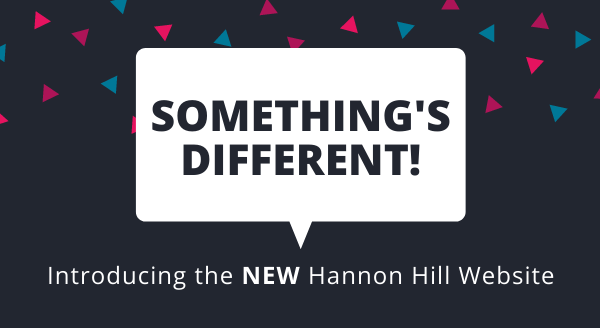
In the Fall of 2019, our team decided it was time to redesign the Hannon Hill website. And we’re so excited to say that, as of this week, we’re officially live! This is our account of the experience, what went well, what caused hiccups, and what we learned.
This redesign represents a striking change for our company and the way we present ourselves to the world. We improved our implementation, editing experience, information architecture, visual identity, and content strategy. Phew!
But the answer to why we did it is simple: we want to significantly impact your experience with our site.
Once the project was greenlighted, we launched an extensive discovery and goal-setting phase to gather important information. Not only did this guide us through the redesign process, it will help us determine if the new site is performing in the manner we’re anticipating.
Phase One: Discovery
First and foremost, we dove into our website to perform an audit of what was currently working and not working. This was done in multiple ways, starting with an analysis of our Google Analytics data.
We also took a good bit of time reviewing competitor’s sites, industry sites we admire, sites we don’t like, design elements we think are cool, good / bad visitor experiences, and endless bootstrap templates
We documented all of this research in a collaborative tool and kept it on hand through the duration of the project.
Overall, the discovery phase was a critical part of the process because it enabled us to make informed decisions and confidently update our course when needed. We referred back to this data constantly.
Phase Two: Build Out
After a lengthy discovery phase, it was time to begin the development process. We created a detailed project plan, audited all indexable pages, firmed up our goals, wrote copy, and purchased a template.
When we got rolling, we found creating graphical comps to be an unexpected challenge. Consistency with banners, headings, spacing, and other elements required thoughtfulness and discipline. But it was important to us to create a fluid and straightforward end-user experience.
When our comps started coming together, our story was truly unfolding.
Development started when each page was thoughtfully laid out. While there would of course be changes, we wanted to eliminate as many on-the-fly updates as possible. We referred to our project plan and comps to keep us on time and within scope.
Phase Three: QA and Testing
We made it! After both the discovery and build out phases, we were ready for quality assurance (QA) and cross-device testing.
From a rigorous QA and testing phase, we were able to identify issues that may have not been caught otherwise. Keeping in mind the importance of responsive design, testing was stretched across all devices, confirming a mobile friendly experience.
Additionally, as a new URL structure was implemented, the team worked to build redirects and ensure minimal 404 errors.
Alas, the QA phase is never truly complete. We’re testing a lot now and that volume will go down, but it will never cease.
Highlights Specific to Our Process:
The redesign kickoff date was August 2019. The new site was rolled out March 2020.
Our seven-month timeframe can be attributed to a few things:
We gave it away that the core team was two marketers and one developer. This was largely by choice to 1.) prevent “too many cooks in the kitchen” and 2.) protect the time of developers working on customer projects.
That being said, we certainly had spontaneous help from other departments. A great example is the video on the Clive page, which was created internally by one marketer to write the script, one support engineer who’s a wiz with video editing software, and one sales person as our voice actor.
Overall, we worked together very well because roles and responsibilities were clearly defined in advance. We respected each other and stuck to the project plan.
Phase One: Discovery
Phase Two: Build Out
Phase Three: QA and Testing
Going through a website redesign is definitely something that should be well planned out based on your specific objectives, with room for improvement beyond launch. Utilizing benchmarks, you can easily evaluate the success and determine next steps as you continue to grow and improve.
And what are we thinking about for the future of our site? More video. More personalization. Publishing to AI platforms. Voice search. Chatbots. It's an exciting time!
We hope you enjoy the new Hannon Hill site. We welcome conversations about our experience and how we can help if you are considering a redesign.
Last Updated: Mar 12, 2020 11:00 AM